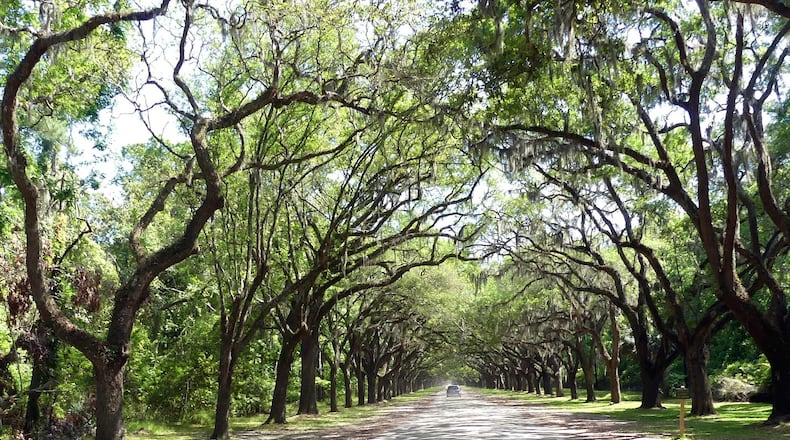Charles Seabrook’s “Wild Georgia” column appears weekly in The Atlanta Journal-Constitution.
When I was growing up on Johns Island, S.C., near Charleston, our non-air-conditioned house and entire yard were shaded by two massive, spreading Southern live oak trees shrouded in Spanish moss. They kept us cool in summer. Bright green resurrection ferns grew on their ponderous limbs, and songbirds sang from their huge canopies.
No wonder, then, that the live oak (Quercus virginiana) is one of my most favorite trees. To me, its great beauty, girth and grace are unmatched in the South. Nothing represents the strength of the South — and its haunting splendor — better than the live oak.
In the backyard of my old home grew another coastal icon, a soaring palmetto tree (also called cabbage palm or sabal palm). One of the sounds I identified with most in childhood was palmetto fronds giving off an eerie rustle when they were gently billowed by a breeze off the Stono River in back of our home. The soft sound helped put me to sleep at night.
Both of these species, of course, are also common on Georgia’s coast and much of the lower Coastal Plain. Both are dominant species in coastal maritime forests. The live oak also has another distinction — Georgia’s official state tree. (The palmetto is the official tree of South Carolina).
Unfortunately, both species are rare to nonexistent north of the Fall Line, where conditions aren’t suitable for their growth. For the live oak, that’s somewhat ironic: Georgia’s official tree is found in less than half the state. (The same is true in South Carolina for the palmetto, which prominently graces the state‘s flag.)
Of course, in Decatur, where I live now, there are plenty of other splendid tree species — tulip poplars, hickories, other types of oaks and on and on — to keep an old tree hugger like me happy.
Still, I long for the live oak and the palmetto. They are major reasons why I often visit the Georgia coast — like I did last week, when I strolled amongst them in a maritime forest on Skidaway Island and refreshed a weary mind.
IN THE SKY: From David Dundee, Tellus Science Museum astronomer: The moon will be first-quarter today. Venus is low in the west just after dark and sets about two hours later. Jupiter, Saturn and Mars are low in the east about two hours before dawn.
About the Author
Keep Reading
The Latest
Featured


